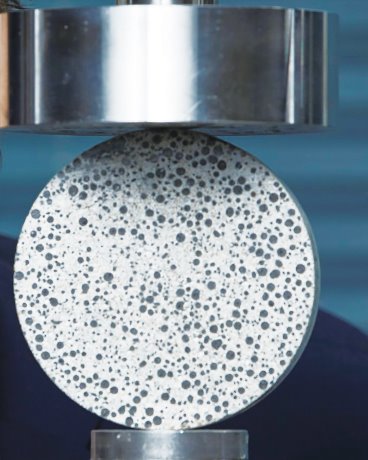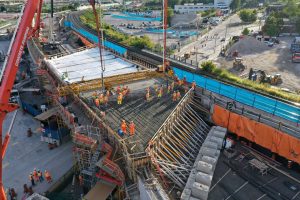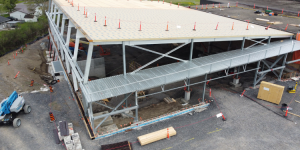A Dutch scientist has invented self-healing concrete, a product that, despite its higher initial cost, could save money and work in the long run. Hendrik Jonkers, a microbiologist at the Delft University of Technology, was one of 15 finalists in the European Inventor Award of 2015 for his invention.
"We can target common problems," Jonkers said during a phone interview.
He’s fielded queries from around the world for the bio-mimicry product, where nature’s models are examined to find designs and applications that solve human problems.
With a background in marine biology, as well as his PhD in microbiology, Jonkers was familiar with how bacteria behave.
Self-healing octopus tentacles and plants that use offshoots to multiply provided him with inspiration as well.
Through research, Jonkers chose Bacillus pseudofirmus and Sporosarcina pasteurii bacteria that biologically produce limestone and which are found near volcanoes. One positive side effect is that the bacteria consume oxygen and prevent the internal corrosion of reinforced concrete. As well, the bacteria can survive for 200 years and are difficult to kill.
Key was finding bacteria that had spores, because spores germinate in water, Jonkers said. After germinating, they multiply quickly.
Once he figured out which spores were viable, he and his research team developed three different bacterial concrete fixes: self-healing concrete, repair mortar and a liquid system.
"Every application is unique," he said.
Self-healing concrete is used during construction. The repair mortar and liquid system are used after damage has occurred. Self-healing concrete is the most complex of the three products.
The healing agent is made in a 95 per cent calcium lactate ratio to a five per cent ration of bacterial spores that are encapsulated within two-to four-millimetre wide clay pellets with separate nitrogen, phosphorous and a nutrient.
The bacteria weigh less than one per cent of the total weight.
Making the healing agent particles is a difficult process.
Made in an industrial lab, the particles need a special coating to prevent their disintegration during mixture and to ensure they remain dormant until triggered.
The trigger is when concrete cracks. As air and moisture enter, they activate the bacteria which awakens and begins to consume the calcium lactate, converting it to calcite, an ingredient in limestone, and thus sealing off the cracks. The process takes about three weeks.
While there is no limit for the length of the crack, which could be centimetres or even kilometres long, the width is restricted.
Jonkers said the self-healing concrete will work for cracks up to one millimetre wide.
In Canada, the oil and gas industry is interested in Jonkers’ invention, particularly for underground infrastructure where access to make repairs can be extremely difficult.
Matt Dalkie, a professional technical services engineer with Lafarge Canada, said the product has merit.
"It’s another way of looking at the built environment and making it as sustainable and durable as we can," he said from Richmond, B.C. "It certainly has potential."
Dalkie, also a LEED-certified professional, was aware of Jonkers’ invention, as well as two other concrete products that use crystalline technology to seal concrete cracks (Xypex and Kryton).
Jonkers admitted that demand hasn’t led to full-scale production of self-healing concrete.
Initial cost could be a factor. The healing agent costs about $7.50 for one kilogram.
A standard-priced cubic meter of concrete is $105, Jonkers said.
The self-healing variety would cost about $175.
"The problem with construction, it has to build as cheaply as possible so it’s not in construction’s interest to use expensive healing agents," he said.
However, given that costs to use the healing agent add about 2 per cent more to the total costs, and that cracks can occur in the first few months and not be detected for a lengthy period, in the long run, it’s worth using the self-healing concrete, he said.
Dalkie agreed that some organizations are quite focused on costs, so it can be tough to get the message across that higher initial prices will be offset by future savings.
"As with any new product, in its infancy, the pricing is an issue in terms of its adoption," Dalkie said.
In Europe alone, it costs $9 billion each year for maintenance of concrete bridges, tunnels and other infrastructure.
North America costs may be even higher, Jonkers surmised.
Two notable Canadian structures that have plagued by cracks caused by alkali-aggregate reactivity, due to the wrong mix, are Montreal’s Champlain Bridge and Toronto’s Gardiner Expressway, Dalkie noted.

Dutch scientist Hendrik Jonkers has invented self-healing concrete that utilizes bacteria to heal cracks.
Photo: European Inventor Awards"










Recent Comments
comments for this post are closed